Discover 400 years of The Dulwich Estate
Our neighbourhood has a fascinating history. Find out about The Dulwich Estate and how it has changed over the last four centuries.
1814: The Dulwich Picture Gallery opens
In 1811, an important collection of paintings was bequeathed to the Foundation, and Sir John Soane – the leading architect of the day – was commissioned to build a gallery for the pictures and a mausoleum for the benefactors. Dulwich Picture Gallery, which opened in 1814, was the first public art gallery in England, pre-dating The National Gallery by 10 years.
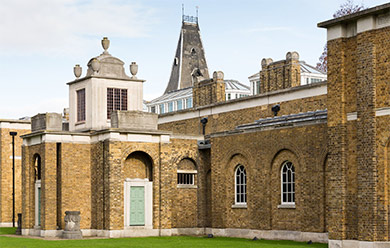
Dulwich Picture Gallery - England's first purpose-built art gallery for the public
Picture credit: Dulwich Picture Gallery
1842: The Grammar School is established for the education of 60 local boys.
Extending the Founder’s wishes to educate local boys, in 1842 the College established the Grammar School of the College of God’s Gift for the education of 60 poor boys from Dulwich. The boys of the James Allen Foundation were transferred to the grammar school, which became known as the Lower School. The James Allen Foundation became responsible for the education of girls alone.
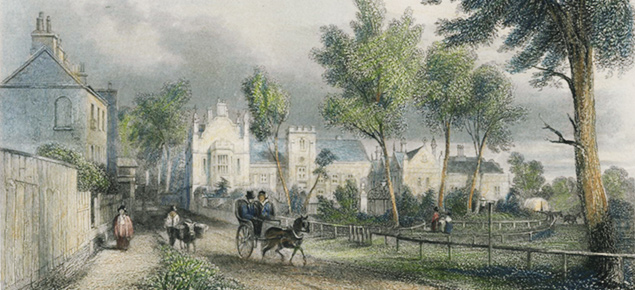
The Grammar School built by Sir Charles Barry
1854: The Crystal Palace opens on Sydenham Hill
The Crystal Palace, which had been created to host the Great Exhibition of 1851, was moved from Hyde Park to Sydenham Hill. The location was chosen by directors of The Crystal Palace Company – some of whom were also directors of the recently established London, Brighton and South Coast Railway (LB&SCR). A new railway line was built, connecting Crystal Palace to the centre of the city and making Dulwich a highly desirable place to live.
The Crystal Palace Company leased large areas of land in the south of the Estate to build large houses for wealthy residents.
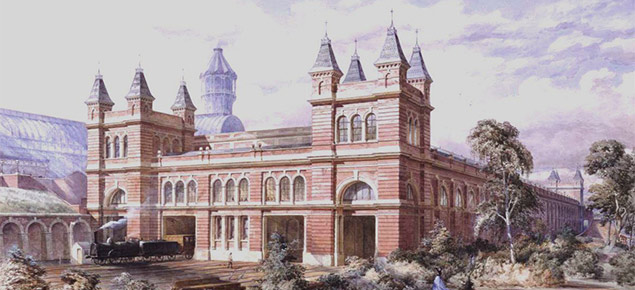
The Crystal Palace High Level Station, Edward Middleton Barry 1865
Picture credit: Dulwich College
1866 – 1887: The schools move into new premises
The money paid in compensation by the various railway companies meant that the schools could expand into new buildings, an added attraction for families moving to the area.
New buildings for Dulwich College were built between 1866 and 1870 in College Road.
James Allen’s Girls’ School was established on its present site in East Dulwich Grove in 1886 and Alleyn’s School moved to its buildings in Townley Road in 1887.
Picture credit: Dulwich College
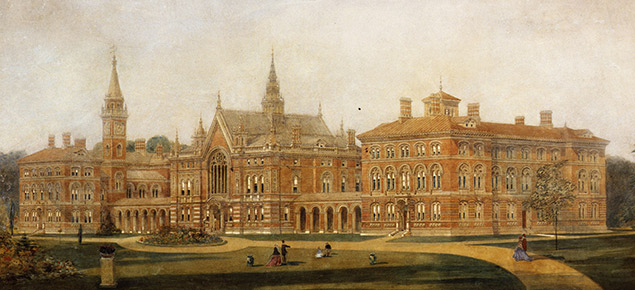
The New College Dulwich, Charles Barry Junior, 1870
1882: New governance arrangements are introduced for the Foundation and the Estate
The Dulwich College Act of 1857 had already reconstituted the Foundation, but in 1882 the Charity underwent a more substantial re-organisation. The Upper School became Dulwich College and the Lower School became Alleyn’s School.
Two boards of trustees were formed: the Estate’s Governors took on responsibility for the Estate and the Eleemosynary (Almshouses) branch while the College Governors were tasked to administer Dulwich College, Alleyn’s School, the Chapel and Dulwich Picture Gallery.
Provision for schools outside Dulwich
Provision was also made for payments for educational purposes to schools in the parishes of St Saviour’s, St Botolph’s and St Luke’s in place of their right to nominate pupils to the Foundation schools.
Picture credit: Dulwich Picture Gallery
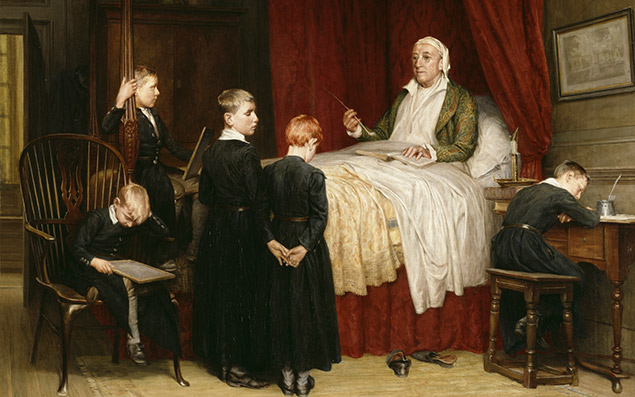
Old Time Tuition at Dulwich College 1828 by W C Horsley




